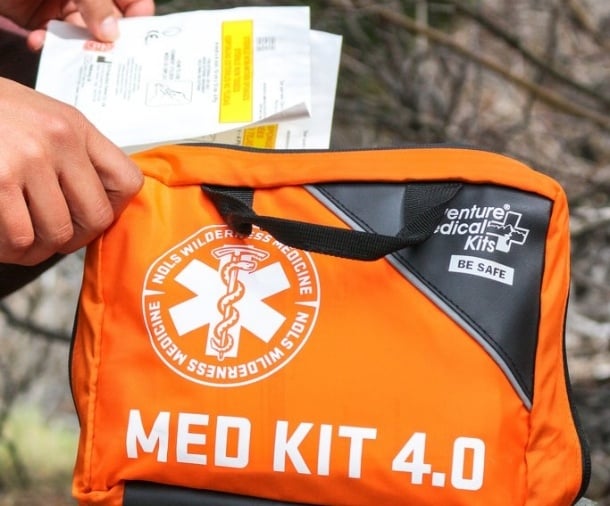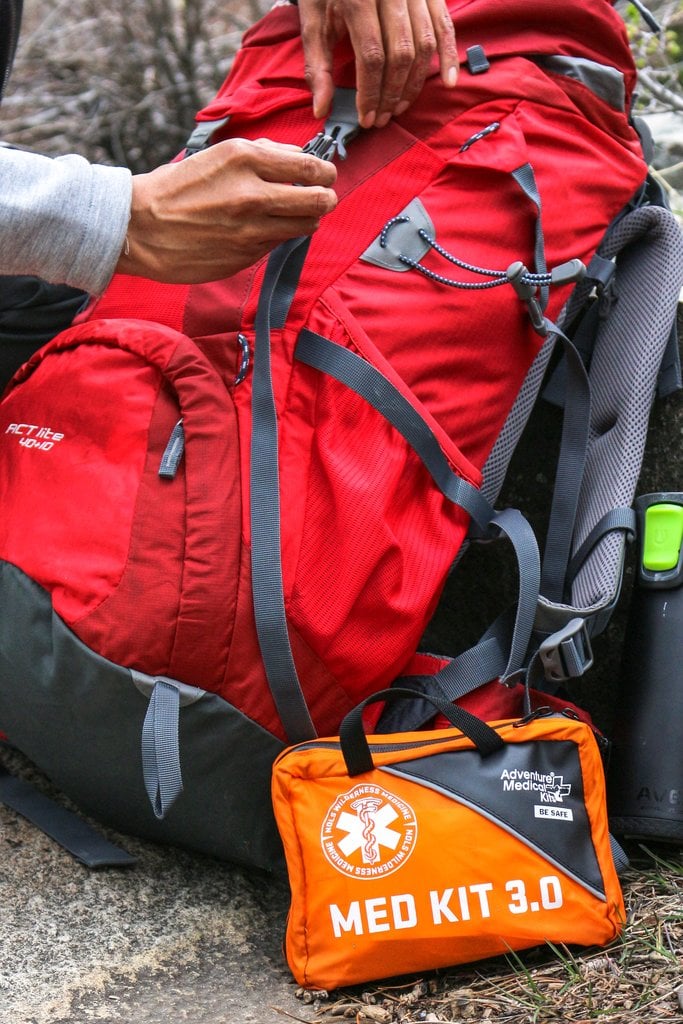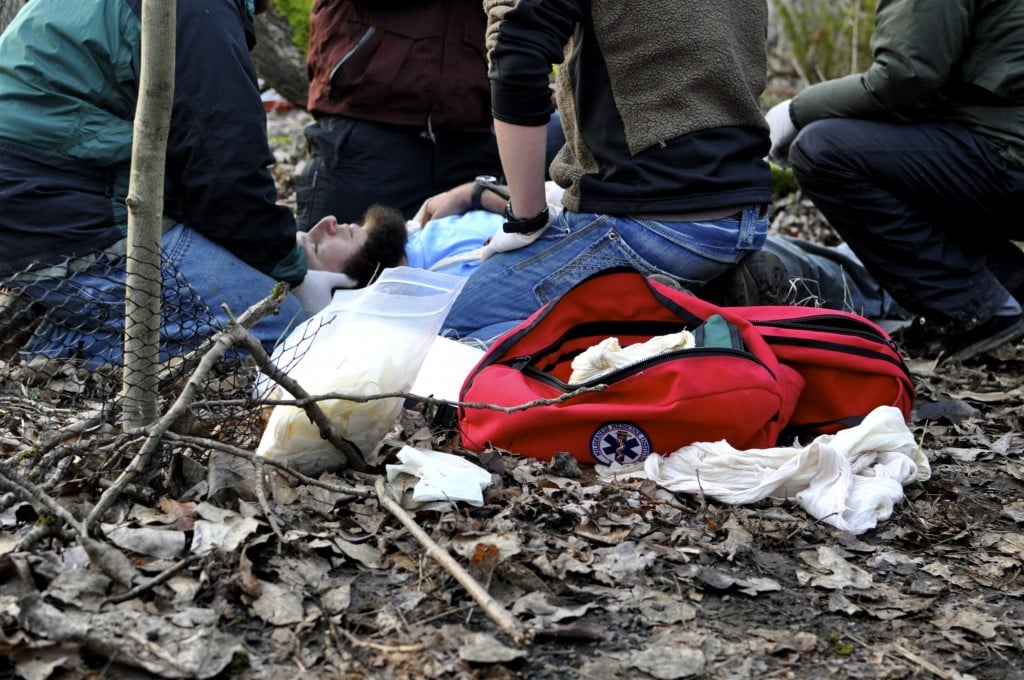
There’s no such thing as the perfect first aid kit, so you should consider your needs, including the length of your trip, the size of your group, and where you will be traveling, and then build a kit that meets them.
You should never pack anything in a first aid kit that you don’t know how to use. It’s wise to go through each item and familiarize yourself with how to use each item before going into the backcountry. And consider taking a Wilderness First Aid course to learn even more about how to use first aid kit supplies to manage common outdoor injuries and illnesses.
Consider including these supplies in your personal first aid kit for backcountry recreation:
1. Trauma shears
With a wide, blunt tip, these shears reduce the risk of cutting the patient while working on an injury.
2. Tweezers
A must-have for splinter removal and/or small cuts and scrapes that need a little extra attention in the field.
3. Safety Pins
Great for securing bandage materials or the base layer you’ve incorporated into an improvised splint.
4. NOLS Wilderness Medicine Pocket Guide
Take your training with you with this great lightweight, waterproof reference for the field.
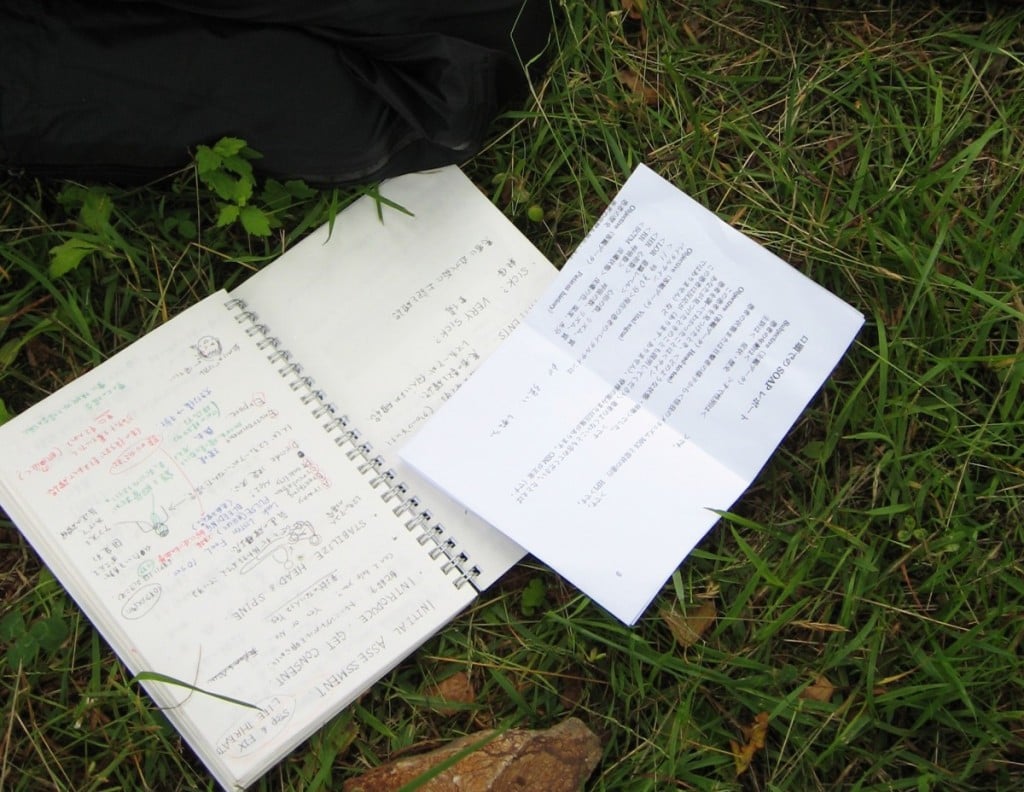
5. Oral Thermometer
Changes in body temperature can be symptomatic of multiple different conditions. Keep an oral thermometer handy to monitor temp changes in your patient.
6. Rescue Mask
Our choice for a barrier when performing CPR, this mask comes with a hard case to keep it safe and a pair of gloves to help create a barrier between the user and patient.
7. 2nd Skin Dressings
Second skin works as an invisible gel bandage that forms a cover that protects wounds and is antiseptic, flexible, and waterproof.
8. Antibiotic Ointment Packets
Prevent infections, fight infections in cuts, scrapes, and burns, and help promote the healing of wounds.
9. Knuckle and Fingertip Fabric Bandages (Band-Aids)
Specially shaped knuckle and fingertip bandages are made of a flexible fabric designed to stretch when you stretch, while adhesive holds the bandage in place.
10. 3 x 4 Nonstick Gauze Pads
Pieces of gauze fabric used to guard and cushion a wound or to absorb blood or fluids. Especially useful for dressing wounds where other fabrics might stick to a burn or laceration.
11. Coban Wrap (7.6 cm x 4.6 m)
A self-adhering bandage or cohesive bandage is a type of bandage or wrap that coheres to itself but does not adhere well to other surfaces.
12. 1-inch Cloth Tape
Seal out dirt and germs to promote healing, secure bandages around wounds that must be protected, and wrap joints in cases of athletic injuries.
13. SAM Splint
A SAM Splint is a waterproof, reusable splint for immobilizing injured bones.
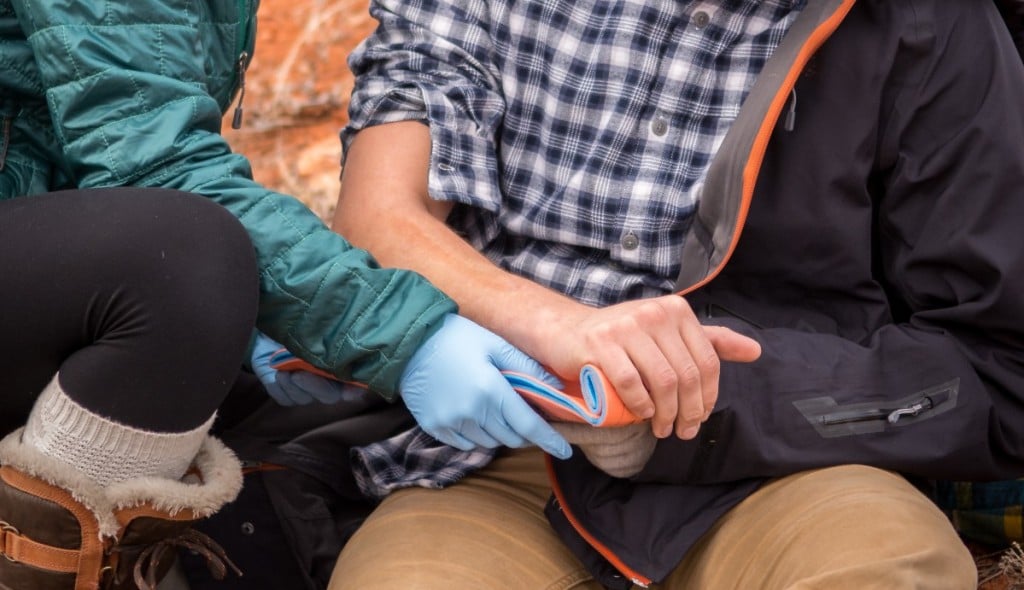
14. Gloves
Three words: Body Substance Isolation. Keep cross contamination to a minimum with a pair of nitrile gloves.
15. 12cc Irrigation Syringe
Use for cleaning wounds, removing dirt and debris without touching a wound.
16. Povidone-iodine Solution
Treat minor wounds and infections and kill bacteria.
17. Antiseptic Towelettes
Keep your hands clean and prevent the spread of germs with these easy to use wipes!
18. Sterile Scrub Brush
Achieve maximum cleansing without causing skin irritation.
19. Wound Closure Strips
Use to secure, close and support small cuts and wounds.
20. Tincture of Benzoin Swabs
Provides a natural sticky layer on your skin that allows bandages to stick better and stay on longer.
21. Moleskin Dressings
Great for fabricating custom finger cuffs, and reducing skin friction against blisters.
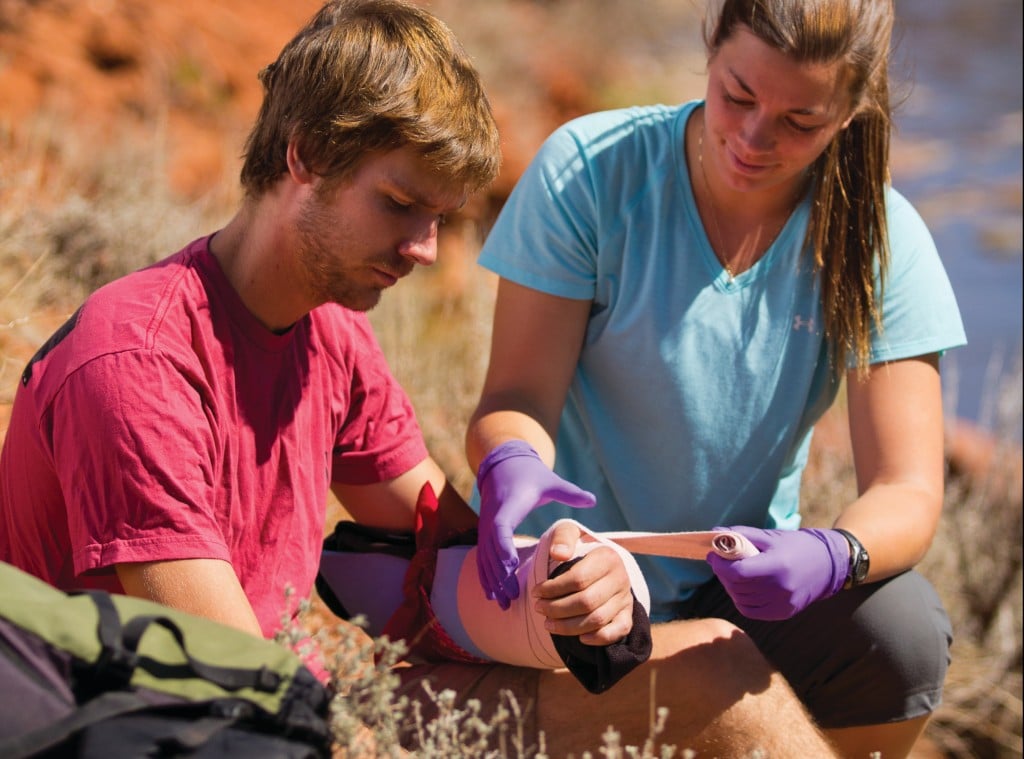
22. 4-6 Inch Elastic Wrap
Provides firm support and compression for minor strains and sprains, as well as splint compression.
23. 1x3 Fabric Bandages (Band-Aids)
Adhesive bandage with a gauze pad in the center, used to cover minor wounds.
24. 4x4 Sterile Gauze Pads
Appropriate for wound dressing, cleaning, prepping or packing.
25. 3-inch Conforming Roll Gauze
Dress wounds and hold dressings securely in place without slipping.
26. Transparent Film Dressings
Provide a moist, healing environment and protect the wound from mechanical trauma and bacterial invasion. These dressings can also act as a blister roof or “second skin.”
27. Triangular Bandages
Creating a sling, swathe, or tourniquet—these are only a few useful options for these handy bandages.
It’s also a good idea to keep a notepad, pencil, and SOAP note forms with your first aid kit.
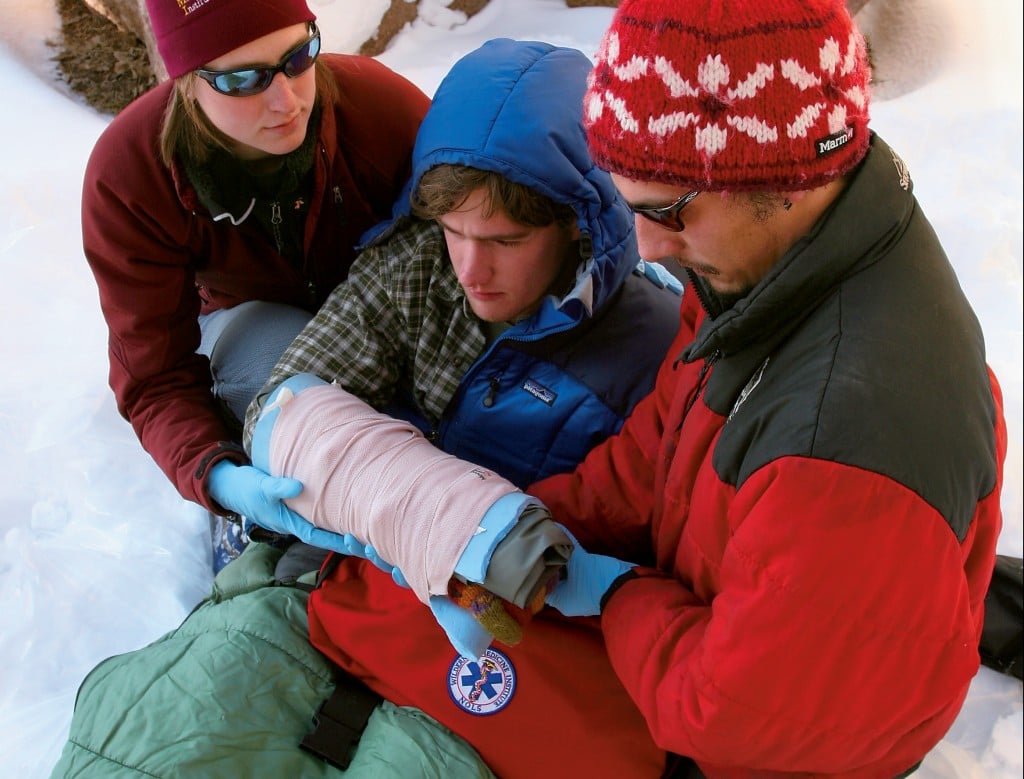
A few other things to consider: Be sure to protect sterile dressings from moisture by sealing them in clear plastic packaging. Always have your kit accessible so everyone in your group knows its location. Label all containers in the kit and include instructions for all medications, since those who know the correct use for administration could end up becoming patients themselves and other group members may need guidance.
Always restock your kit for each trip, checking expiration dates, making sure that sterile items haven’t been open or damaged, and adding any additional items that might be needed for special trips (high altitude, etc.).
Pro tip: It’s usually cheaper to buy a pre-made first aid kit, and then add extra supplies based on your needs, than it is to build one from scratch.
Take a Wilderness First Aid course to learn more about how to use first aid kit contents to treat common injuries and illnesses.
- Wilderness First Responder
- First Aid
- Wmi
- Wilderness First Aid
- Education
- First Aid Kit
- Wilderness Medicine
Written By
Sarah Buer
Sarah is a Wyoming native, Wilderness First Responder graduate, and former marketing coordinator for NOLS Wilderness Medicine. When she’s offline she enjoys running, singing and playing guitar, and playing in the mountains



